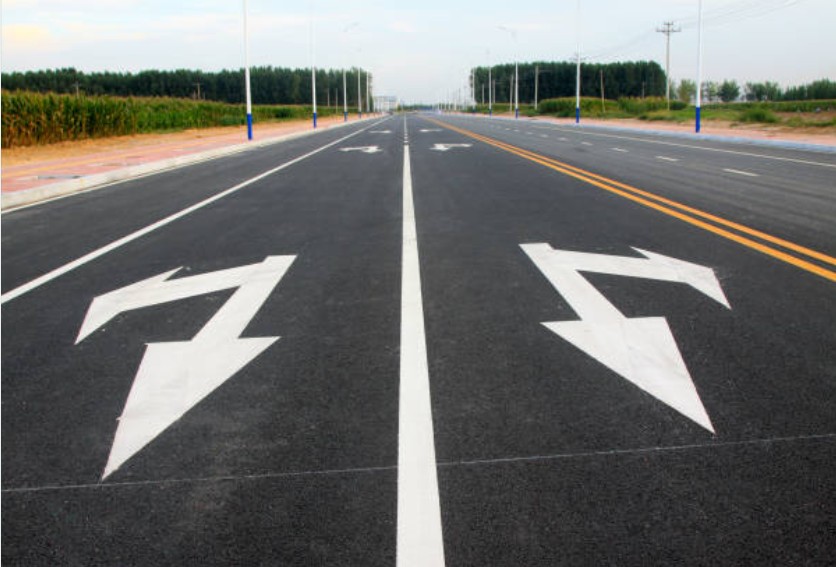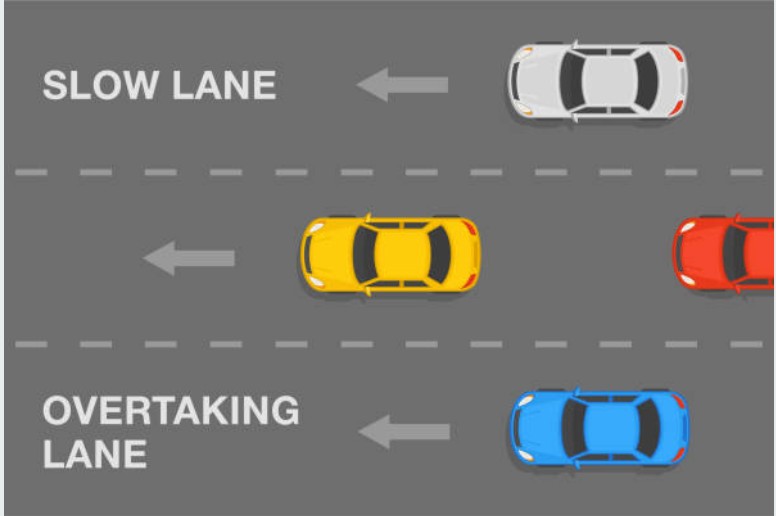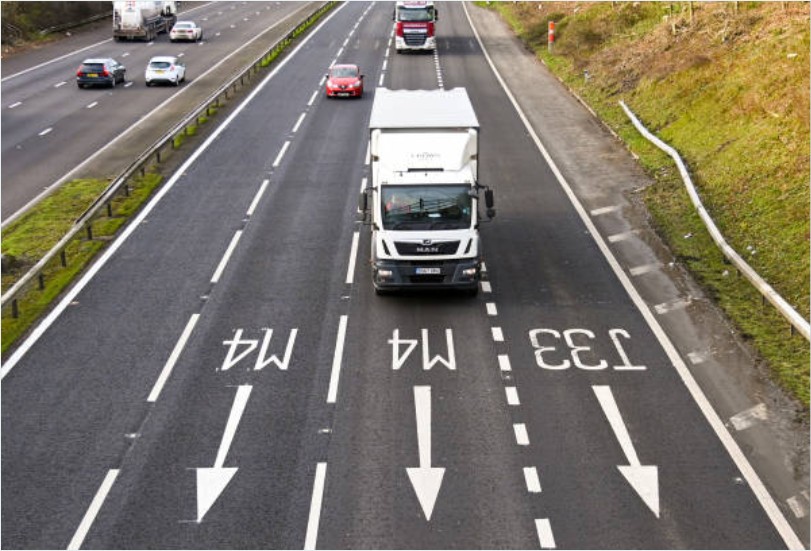UK drivers are used to all sorts of road layouts, but few are as confusing or as risky as the three-lane two-way road. This older style of road design has sparked many questions, especially from learner drivers and those unfamiliar with its rules. The most common question is: “Some two-way roads are divided into three lanes — why is this dangerous for UK drivers?”
In this blog, we break down the hazards associated with this unusual layout, how to approach it safely, and what UK driving regulations say about it.
Introduction – A Confusing Layout with Real Risks
You’re driving on a rural A-road and suddenly find yourself on a stretch with three lanes but no clear division between directions. You’re not alone if you hesitate. This layout is a remnant of older UK road design and still exists in many parts of the country, especially in less modernised regions.
What Do We Mean by Three-Lane Two-Way Roads?

This road type typically features:
- One lane in each direction, with
- A shared centre lane used alternately for overtaking by vehicles travelling in either direction
There are usually no physical dividers, and markings can be faded or unclear, leading to dangerous assumptions.
Why UK Drivers Find Them Confusing and Hazardous
The danger lies in driver uncertainty. With no designated right-of-way in the centre lane, drivers may attempt to overtake at the same time, from opposite directions, causing near misses or even head-on collisions.
Some Two-Way Roads Are Divided into Three Lanes – Why Is This Dangerous?
This road setup has been widely criticised by driving experts and road safety organisations. Here’s why:
The Centre Lane Dilemma: Who Has Priority?
On a three-lane two-way road, the centre lane is not dedicated to a specific direction. It is a shared overtaking lane, which creates confusion about priority, especially when two vehicles approach from opposite directions intending to use the middle at the same time.
Increased Risk of Head-On Collisions
Because both directions can access the middle lane, head-on collisions become a real possibility. Drivers may misjudge overtaking windows or assume others will yield, resulting in dangerous situations at high speeds.
Ambiguity in Road Markings and Overtaking Rights
Markings vary from one road to another. Some may have:
- Broken white lines on either side of the centre
- Solid lines restricting overtaking
- No clear signage at all
This lack of uniformity makes it harder for drivers to respond correctly, particularly for those unfamiliar with the area.
Main Dangers of Three-Lane Two-Way Roads:
- No clear right of way in the centre lane
- High risk of head-on crashes during overtaking
- Misleading or worn road markings
- Poor visibility and judgment errors
- Inexperience or hesitation from other drivers
How Are These Roads Marked and What Do They Mean?
Understanding road markings is key to navigating these roads safely.
Solid vs Broken White Lines Explained

- Broken white lines: You may use the centre lane for overtaking when safe to do so.
- Solid white lines: You must not enter the lane unless avoiding an obstruction or turning right.
- Double solid lines: No overtaking allowed by either side.
Road Sign Confusion
Some signs indicate an upcoming overtaking lane, while others give no warning at all. Lack of standardisation adds to the danger, as drivers may interpret signs differently.
Highway Code Advice for Multi-Lane Roads
According to the UK Highway Code, drivers must only overtake when it is clearly safe, must never assume priority, and should be especially cautious on undivided or shared lanes.
Real-World Scenarios Where These Roads Become Dangerous
Here’s how problems arise in real driving conditions:
Overtaking on Rural A-Roads
Drivers frustrated by slow traffic often try to overtake in the centre lane, but this becomes dangerous when visibility is limited and both directions are using the same space.
Limited Visibility and High-Speed Approaches
Hills, bends, and adverse weather can reduce visibility, making it almost impossible to judge when it’s safe to overtake.
Multiple Drivers Using the Centre Lane at Once
Without clear priority, it’s possible for two vehicles to simultaneously enter the middle lane, creating a head-on threat — especially at national speed limits.
Table: Dangerous Scenarios on Three-Lane Two-Way Roads
| Scenario | Risk Level | Explanation |
|---|---|---|
| Both directions are being taken simultaneously | High | Can lead to a head-on collision |
| Poor road markings | Medium | Misleads drivers about when overtaking is safe |
| Bad weather or low light conditions | High | Reduces reaction time and visibility |
| Sharp bends or crests | High | Limits the line of sight when entering the centre lane |
| Hesitant or unfamiliar drivers | Medium | Causes sudden braking or indecision |
How to Drive Safely on a Two-Way Three-Lane Road

Understand Right of Way
There is no automatic priority for either side. Drivers must assess the situation and only use the centre lane if the road ahead is completely clear.
When (and When Not) to Use the Centre Lane
Only use the middle lane for overtaking slower-moving vehicles or turning right, and never assume the other side won’t use it at the same time.
Tips for Anticipating Other Drivers’ Intentions
- Watch for oncoming vehicles signalling right
- Avoid overtaking unless visibility is excellent
- Be extra cautious on unfamiliar or rural roads
Safety Tips for Navigating Three-Lane Roads:
- Drive defensively, not aggressively
- Don’t assume the other driver sees you
- Avoid overtaking on bends or hills
- Follow the Highway Code rules on lane usage
- Keep headlights on in low visibility conditions
Are Three-Lane Two-Way Roads Still Common in the UK?
History and Phase-Out of This Layout
Three-lane two-way roads were introduced in the mid-20th century to improve overtaking opportunities on single carriageways. However, due to their poor safety record, many have since been replaced by dual carriageways or reconfigured with clearer markings.
Why Some Still Exist
In rural areas or on older roads, this layout may remain due to budget constraints or local planning delays.
Government Efforts to Modernise Road Networks
The Department for Transport and local councils are gradually updating these roads where possible, focusing on crash-prone areas first.
Conclusion – Awareness Is the Key to Road Safety
To answer the core question — “Some two-way roads are divided into three lanes – why is this dangerous?” — the danger lies in unclear priority, shared space, and miscommunication between drivers. Without proper awareness, even experienced motorists can make fatal errors on these roads.
While these layouts are being phased out, many still exist, especially in rural areas. Until they’re gone, UK drivers must approach them with caution, patience, and a clear understanding of how to use the centre lane safely — or not at all.
FAQs About Driving on Three-Lane Two-Way Roads
Can Both Directions Use the Middle Lane at the Same Time?
Technically, yes — but this is what makes it dangerous. Drivers must assess the situation and yield if another vehicle is already using the centre lane.
What Does the Highway Code Say?
The Highway Code Rule 135 advises that drivers must not overtake unless it’s safe, and must not force their way into the centre lane.
Is Overtaking Illegal in the Centre Lane?
No, as long as there are broken white lines and it’s clearly safe to do so. However, if overtaking would cause another driver to brake or swerve, it’s considered unsafe and may be deemed careless driving.






